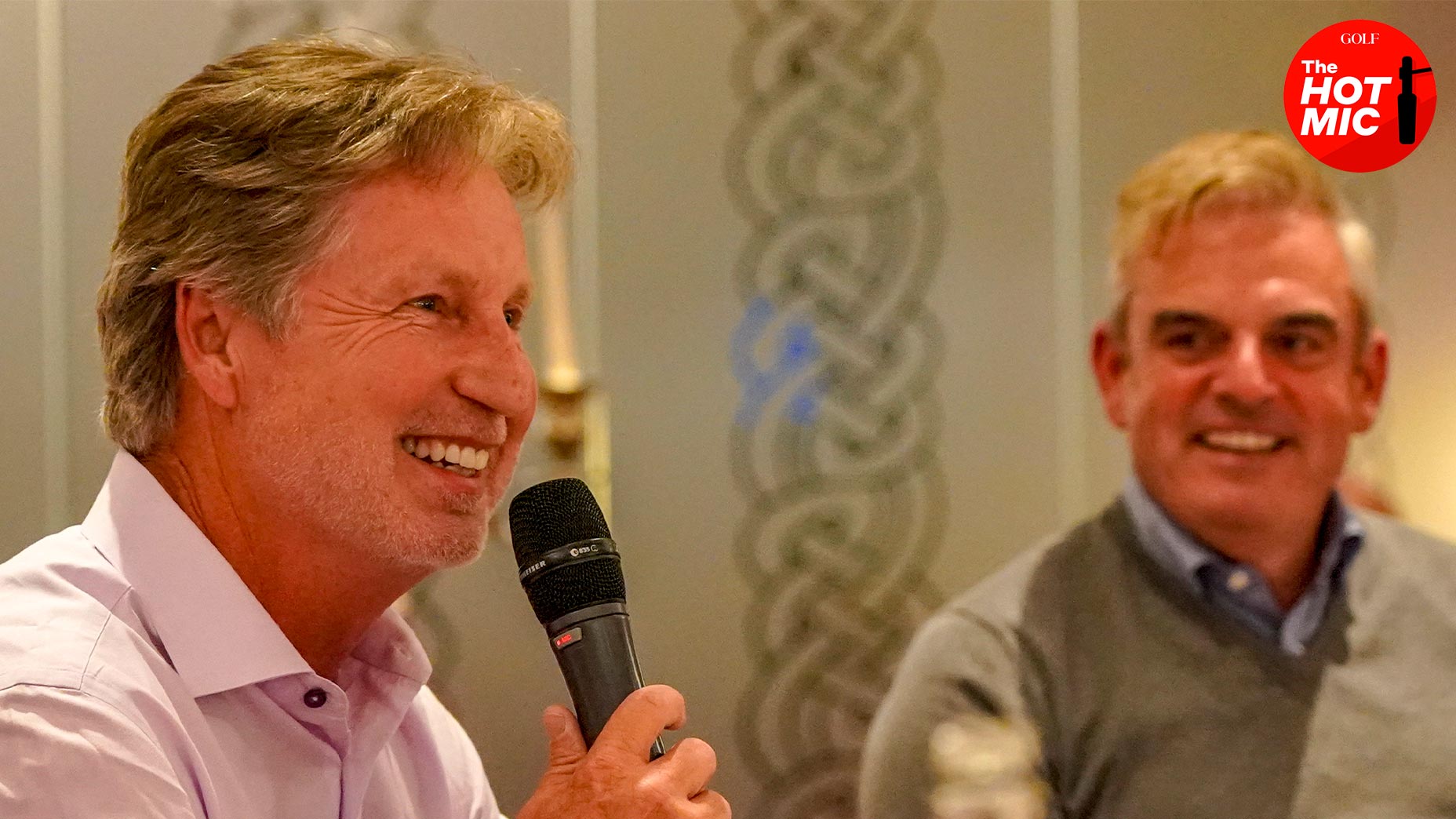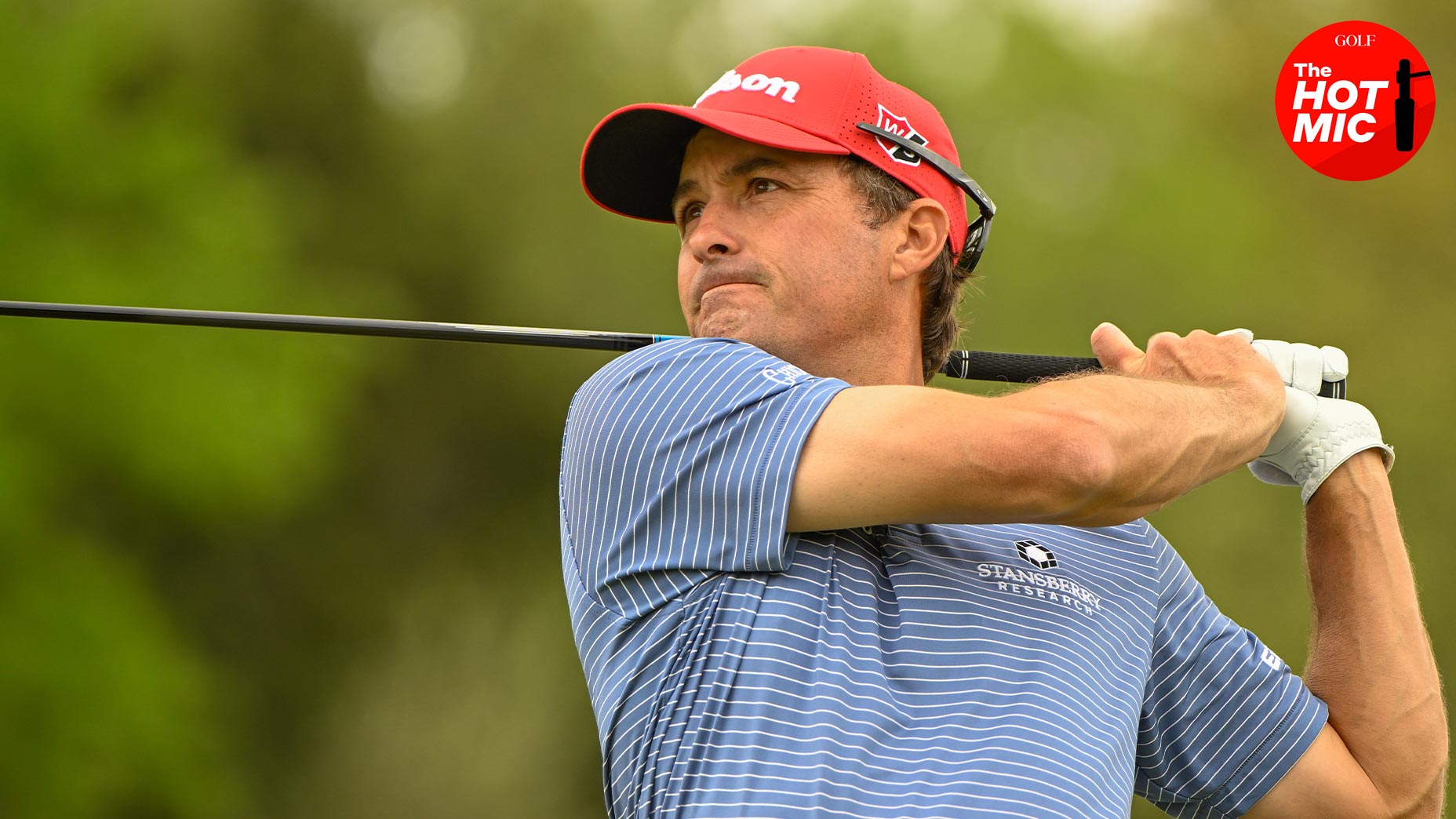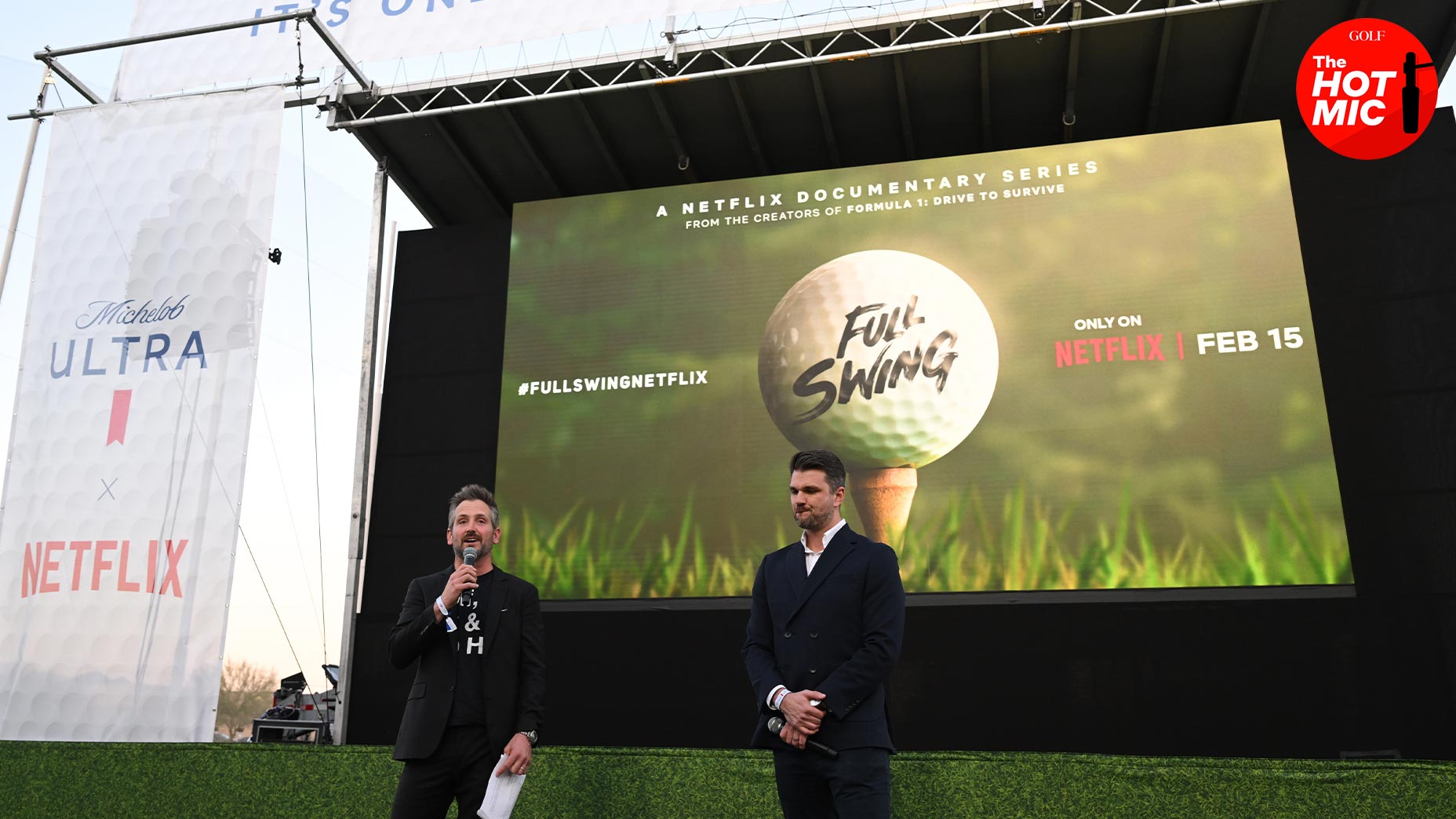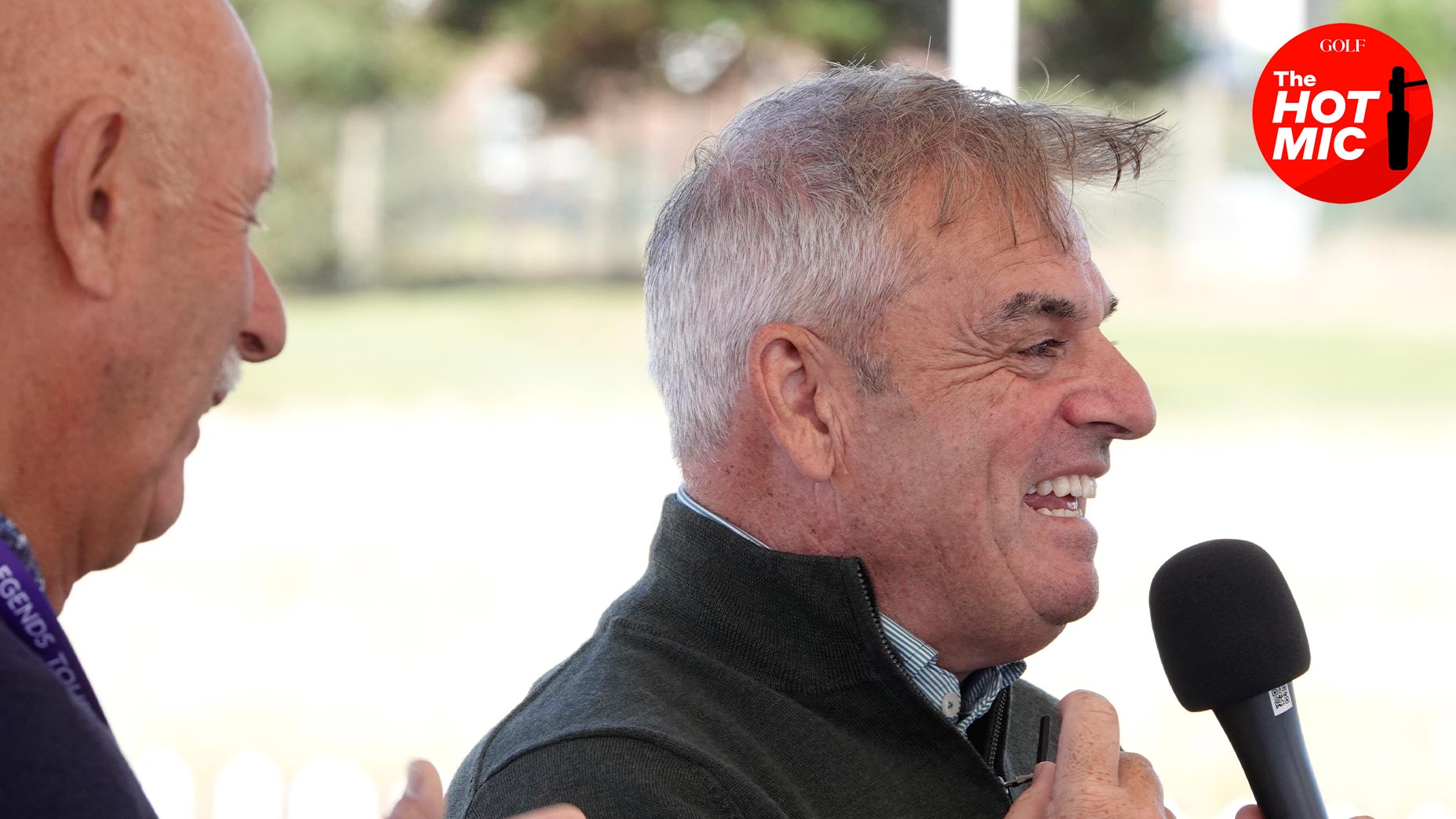Solheim Cup TV coverage was ‘frustrating,’ even NBC broadcasters agree
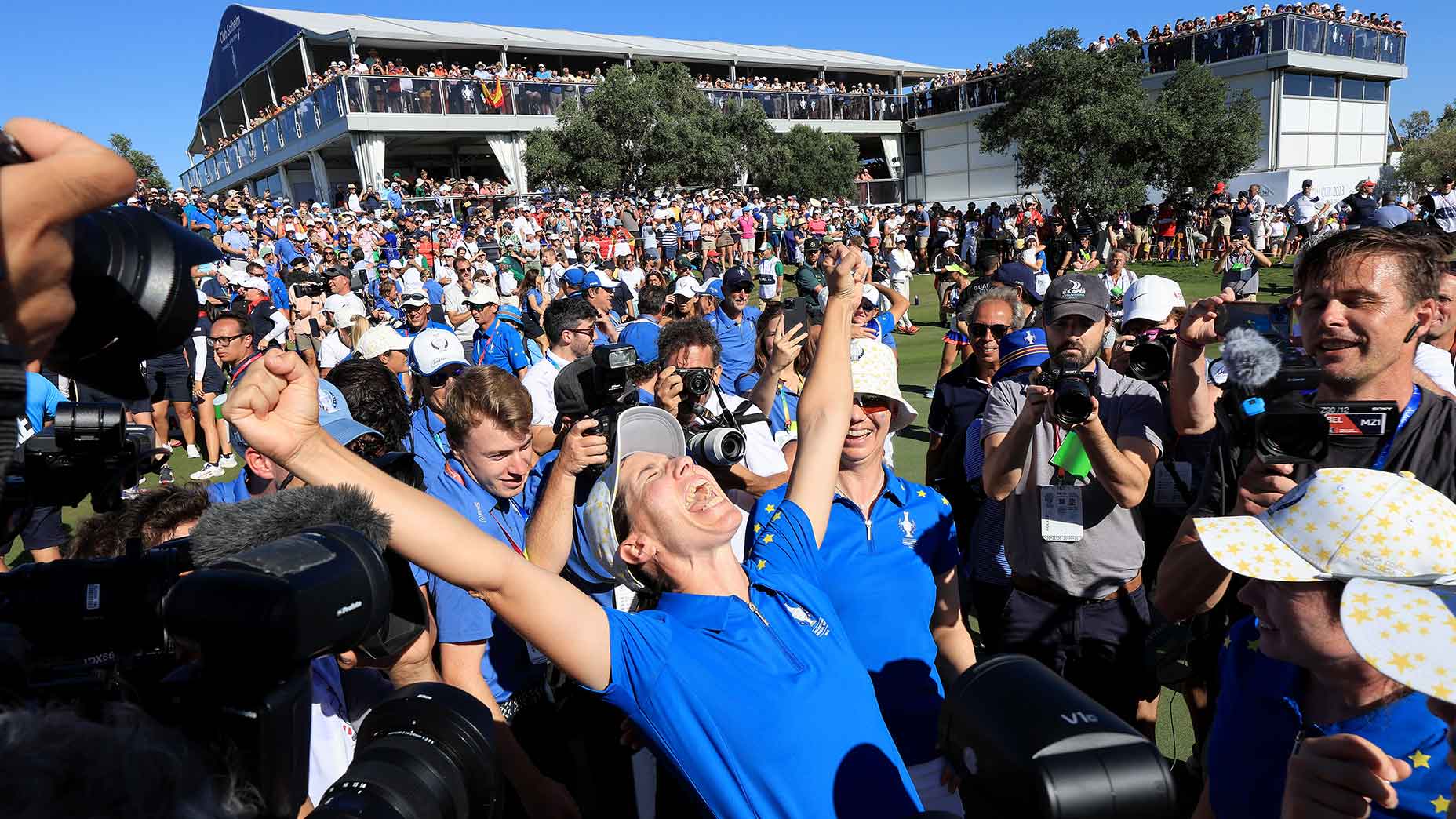
Cameras captured Carlota Ciganda's celebration on Solheim Cup Sunday...and that was about all.
Getty Images
There were, regrettably, many moments that illustrated the deficiencies of the Solheim Cup production last weekend. But perhaps the most obvious came early in Sunday afternoon’s singles matches.
It was then, around 2 p.m. local time, that the production’s director settled upon the sort of super-close-up beauty shot that is common in nearly every major sports TV production. On a normal NBC broadcast, that shot may be of a unique reflection in a lake, or the slow rustling of the leaves in the trees — but this was no normal NBC broadcast. Instead, the cameras settled in on a shot of two massive dragonflies, well, attached to one another, appearing to be in the midst of the reproductive act.
It was a startling visual, but more startling was the length of time the show’s producer/director team elected to leave it on the airwaves. Instead of shots from the heart-stopping action happening on Sunday at a razor-close Solheim Cup, the broadcast showed the pair of dragonflies for the better part of 30 seconds.
It is not hard to argue that those cameras would have been better trained on the action happening before them, and not only because of the FCC-questionable quality of the dragonfly images. When its cameras were actually trained on the action, UCOM — the German-based production company responsible for the broadcast — had still missed deeply important moments of the biggest matches all tournament week, leaving those watching at home all around the world wondering what, precisely, had happened.
The issues were more or less unavoidable during Sunday’s final round coverage, as UCOM’s production team wandered the course capturing the action, when they bothered to do so at all. At several points, the broadcast either missed or elected not to show moments that shifted the fate of several key matches. The worst of these came during the final stanza of Carlota Ciganda’s heart-pumping match with Nelly Korda on Sunday afternoon. In the third-to-last hole of the match that ultimately decided the Cup, cameras missed Ciganda hit a “proper shank” that briefly tied their match and appeared to shift the Cup into the United States’ hands.
These kinds of moments are unacceptable to miss in the most understandable TV production circumstances: when there are 72 golfers or more on 18 different holes at one time. In a match-play format that maxes out at 24 golfers on a dozen holes and features far less than that for the majority of tournament week, missed moments of this magnitude are inexplicable.
So inexplicable, it turns out, that even the broadcasters responsible for calling the action seemed perplexed. During Saturday’s second round, NBC’s Tom Abbott took the unusual step of issuing an apology on behalf of UCOM, which had missed a birdie make from the U.S. Andrea Lee on the 14th hole to help flip a match.
“We apologize that we didn’t show it to you, but we are taking our picture from UCOM, which is the German production company that provides pictures to the Ladies European Tour,” Abbott said. “We’d love to show you, but they didn’t show us.”
In the aftermath of the broadcast, several members of NBC’s on-site team took to social media to commend their teammates on their work in “difficult circumstances,” while analyst Kay Cockerill was more direct with her criticism.
“It was the worst TV production experience I’ve ever had in my 28 years covering golf,” Cockerill tweeted on Monday. “Beyond frustrating and disappointing to not be able to fully & properly present @TheSolheimCup.”
For those outside the squirrely corners of Golf Twitter, a refresher on the World Feed — the reason why a German production company, and not NBC, was mainly responsible for your Solheim Cup telecast. For many international-based broadcasts, production costs are too high for U.S.-based networks to justify sending their normal camera crews, production teams, and broadcasters. Instead, either the network or the governing body responsible for hosting the tournament will pay for a locally-based production company to handle the broadcast duties, allowing those in the U.S. and elsewhere abroad to access golf coverage at a lower upfront cost. As a result of this arrangement, NBC/Golf Channel sent a significantly smaller broadcast team, at a much lesser cost, consisting primarily of on-air talent for its Solheim Cup coverage.
The Ladies European Tour, or LET, awarded the rights for its Solheim Cup production to UCOM, which in turn produced and directed the broadcast that was shown on NBC/Golf Channel. As with the Ryder Cup’s DP World Tour/PGA of America split, the LET is responsible for European-based Solheim Cups, while the LPGA handles American-based iterations of the event. GOLF.com reached out to the LET for comment on the decision to grant its Solheim Cup rights to UCOM, but did not receive an immediate response.
The World Feed is not unique to the Solheim Cup — another, significantly better World Feed has been used for the Open for decades, and one will be used for this week’s Ryder Cup — but UCOM, the broadcaster behind the Solheim Cup World Feed, is. UCOM has been the exclusive broadcast partner of the LET since 2011, typically handling broadcasts of significantly lesser cost and scale (in a 2020 story, the company said it typically uses 15 cameras per broadcast, a pittance next to the more than 100 used for big-time NBC golf broadcasts). Outside of LET coverage, UCOM’s exposure in the golf industry is slim, with European Tour Productions typically handling many of the golf events held on the continent.
It’s likely, if not certain, that UCOM was overwhelmed by the scope of the Solheim Cup’s every shot matters style and the spread-out footprint of the golf course, leading to some of the failures shown on TV throughout the weekend. Though it remains to be seen what, if anything, changed about UCOM’s coverage from the last European Solheim Cup to this one that led to the issues shown on television in the U.S. and abroad.
Of course, NBC could have assuaged the issue by sending a smaller number of camera people to supplement the World Feed’s coverage, as it has done with the Open and will do this week for the Ryder Cup. But it would be a significant financial challenge to send the numbers needed to paper over the misses caused by UCOM, to say nothing of a full-scale production. One NBC source speculated such costs would represent a “seven-figure proposition” for the network.



